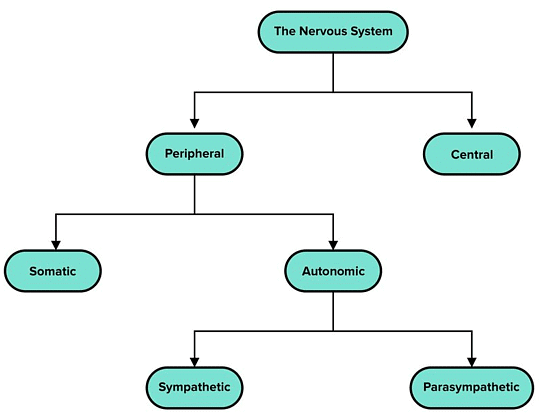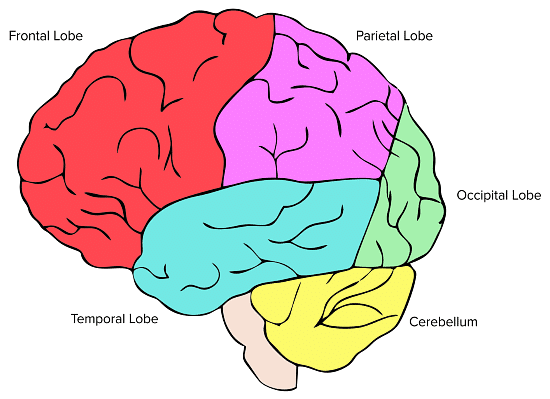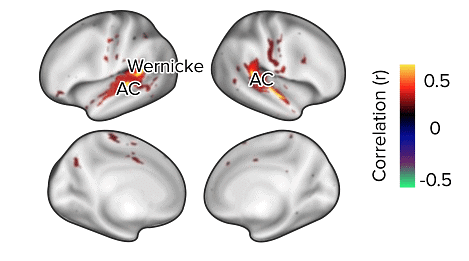Behaviour and Biology | Psychology and Sociology for MCAT PDF Download
Introduction to Biology and Behavior
- Behavior refers to any and all of the actions our bodies perform: whether they are intentional, such as solving a mathematical equation, or unintentional, such as a knee-jerk reflex. Behavior can also include personality, cognition, and decision-making.
- Our behavior is influenced by a complex interplay between our environment, our genes, and a variety of biological systems. Of these biological systems, perhaps the most important is the nervous system. In this guide, we’ll begin to introduce the role of the nervous and endocrine systems in shaping our behavior and interactions with the environment. What are the specific structures and pathways that are important to our behavior? And what happens to our behavior when these biological systems are disrupted or damaged?
- The information presented in this guide will describe key aspects of the nervous system that are relevant to behavior. To better understand the nervous system in its entirety, be sure to refer to our guide on the nervous system.
- Throughout this guide, several important keywords will be given in bold. You are encouraged to try creating your own definitions and examples to better aid your understanding. Similarly, we encourage you to sketch diagrams and annotate them with your own knowledge to deepen your understanding of different concepts. At the end of this guide, there are also MCAT-style practice questions that will test your knowledge of this material.
Anatomy of the Nervous System
(a) Divisions of the Nervous System
The nervous system can be divided into the central nervous system (the brain and spinal cord) and the peripheral nervous system. The names of these divisions of the nervous system are intuitive; they match their location and function. After all, the brain and spinal cord are responsible for processing information and coordinating tasks with the peripheral nervous system, which includes all sensory neurons and nerves that move the muscles.  Divisions of the Nervous System
Divisions of the Nervous System
- The peripheral nervous system and central nervous system communicate with each other through the peripheral nervous system’s efferent and afferent nerves. Afferent nerves are sensory nerves that ascend the spinal cord and carry sensory information from the environment into the brain. Efferent nerves are motor nerves that exit the brain and descend the spinal cord, relaying commands from the brain to our muscles. (It may be helpful to use this mnemonic: afferent nerves arrive at the brain, while efferent nerves exit.)
- Afferent and efferent fibers are organized in the spinal cord and generally occupy different regions. The dorsal roots (back-facing side) of the spinal cord contain bundles of afferent (sensory) fibers. The ventral roots (belly-facing side) of the spinal cord contain bundles of efferent (motor) fibers.
- The peripheral nervous system can be further divided into the somatic and autonomic nervous systems. The somatic nervous system governs voluntary movements and thus innervates the skeletal muscle. In contrast, the autonomic nervous system governs automatic or involuntary movements. This includes nervous system control of the digestive system, various glands, and smooth muscle.
- The autonomic nervous system is further divided into the sympathetic (“fight-or-flight”) and parasympathetic (“rest-and-digest”) nervous systems. The sympathetic nervous system is designed to respond to stressors in the environment, and the parasympathetic nervous system is designed to help us rest. The sympathetic nervous system expends energy, while the parasympathetic nervous system conserves energy.
In response to a stressor, the sympathetic nervous system will cause:
- inhibition of saliva production
- dilation of the pupils: to take in as much light as possible to better assess the dangerous situation
- accelerated heart rate: to transport oxygen to the muscles
- slowed digestion: so blood can be diverted to the muscles
- airway dilation: to provide more oxygen with each inhalation
- increased glycogenolysis in the liver and increased blood glucose levels: to provide energy
Activation of the parasympathetic nervous system would cause the opposite effects. This includes the diversion of blood to the digestive tract so nutrients may be absorbed and glycogenesis in the liver is increased. (For more information on glycogenolysis and glycogenesis, refer to our guide on carbohydrate metabolism.)
When presented with a stressor or dangerous situation, the sympathetic nervous system is activated. The adrenal cortex releases cortisol while the adrenal medulla releases epinephrine: an important hormone and neurotransmitter, respectively, implicated in the stress response. Additionally, a cognitive appraisal of the situation is performed. During this appraisal, the ability to resolve the stressor or situation is assessed and likely outcomes are determined.
(b) Neurotransmitters
Neurotransmitters are chemical messengers that transmit messages from a neuron cell to a target cell. They can be classified based on function (e.g., mood regulation), effect on the cell membrane potential (e.g., inhibitory, excitatory, or both), or locus of action (e.g., central or peripheral nervous system). For example, acetylcholine is the key excitatory neurotransmitter of the skeletal system and regulates movement.
You should remember how neurotransmitters function in relation to membrane potential. Neurotransmitters exit via exocytosis from the presynaptic terminal, travel across the synaptic cleft, and then bind to receptors on the target cell where they induce changes in the neuronal membrane's permeability to ions. As noted, deficits in any of these neurotransmitters may cause disorder or illness. To learn more about this, be sure to refer to our guide on psychological disorders.
(c) Regions of the brain
The brain is roughly composed of three main areas: 1) the hindbrain, 2) midbrain, and 3) forebrain. In humans, the brainstem is composed of regions from the midbrain and hindbrain. The functions carried out by these areas of the brain correspond with their evolutionary age: the ancient hindbrain governs basic survival mechanisms (including breathing), while the younger forebrain governs complex functions (such as interpreting language). As a result, while individuals can generally live without a forebrain, they would die without a midbrain or hindbrain.
The outermost part of the cerebrum is the cerebral cortex. This layer merits special attention because it is responsible for many of our higher cognitive functions. The cerebral cortex is rich with the cell bodies, or soma, of neurons. These neurons have long axons that extend through the brain and into the spinal cord.
The cerebral cortex can itself be divided into four major lobes, each with loosely specialized functions.
- The frontal lobe governs executive function, initiates voluntary motor movement, and is responsible for producing speech.
- The parietal lobe governs spatial processing, proprioception, and somatosensation.
- The occipital lobe governs visual processing.
- The temporal lobe governs learning, memory, speech perception, and auditory perception. An important language center known as Wernicke’s area is located here.
 The Four Major Lobes of The Cerebral Cortex.
The Four Major Lobes of The Cerebral Cortex.
Note that the left and right hemispheres of the cerebral cortex are connected by a bundle of nerves called the corpus callosum. The corpus callosum is essential to ensuring that two sides of the brain can communicate with one another. It also allows the sending of sensory information from one side of the body to the opposite side of the brain for processing. Thus, any environmental cues that are sensed by the right side of the body are sent to the left hemisphere of the brain for processing. One exception to this rule is the perception of smell or odor; in olfaction, sensory signals are sent directly into the brain by cranial nerves without crossing to the opposite hemisphere.
- Wernicke’s area and Broca’s area are two key regions of the brain that are necessary for language skills.
- Wernicke’s area is located on the left side of the temporal lobe and is necessary for understanding speech. Wernicke’s aphasia can result from traumatic injury to this area. Patients with Wernicke’s aphasia find it difficult to understand written and spoken language but speak a nonsensical stream of words with the fluidity and intonations of regular speech.
- Broca’s area is located on the left side of the frontal lobe and is responsible for speech production. Broca’s aphasia can result from traumatic injury to this area. Patients with Broca’s aphasia can understand written and spoken language well but may be unable to form coherent words or speech.
Reflexes and Innate Behavior
- Reflexes are behaviors that do not need to be taught or learned. They are the result of neuronal pathways that have been preserved and strengthened over many years of evolution.
- The neonatal reflexes are naturally present in newborn infants and gradually disappear as the child matures. These reflexes are normal and expected. However, the presence of a neonatal reflex well after infancy could indicate a neurological problem.
- The Babinski reflex is present in children from ages 0-2 years old. It is stimulated by dragging a pointed object across the sole of the foot. A normal response is plantar extension, in which the toes splay or extend outwards. In adults, the reflex disappears and the toes curl inward (flex) instead.
 Plantar Extension and Flexion.
Plantar Extension and Flexion.
- The grasping reflex is present in children from ages 0-6 months old. It is stimulated by placing an object in the infant’s hand. In response, the infant will tightly clasp its hand around the object.
- The rooting reflex is present in children from ages 0-4 months old. It is stimulated by stroking the cheek. In response, the infant will turn the head to the same side as the cheek that is stimulated. This reflex is thought to be an evolutionary adaptation to suckling; by turning the head, the infant is able to find the mother’s nipple and attach itself.
- The sucking reflex is present in children from ages 0-7 months old. It is stimulated by placing an object in the infant’s mouth or stroking the roof of the mouth. This results in the infant suckling or sucking on the object that was placed in the mouth. This is an unconscious reflex that becomes a conscious response later in infancy and maturity.
- The Moro reflex is present in children from ages 0-6 months old. In response to a startling sound or abrupt change in the infant’s position, the infant will rapidly reach its arms outward with outspread hands and then draw its arms closer together.
- The stepping reflex is present in children from ages 0-2 months old. When the infant is held upright such that the feet can touch the floor, it will take step-like motions on the ground. This is a developmental precursor to walking, which is usually attained around 1 year of age.
- The tonic neck reflex is present in children from ages 0-7 months old. When the infant is placed lying down with the head turned to one side, the arms move in response. The arm on the same side the infant’s head is turned to will extend while the opposite arm flexes. Due to the resemblance of this posture to a fencing stance, this reflex is also known as the fencing reflex.
Methods Used to Study the Brain
It’s important to remember that all behavior originates from the neural connections that are formed in the brain. So, to understand a particular behavior, researchers must be able to non-invasively study the brain. There are several popular imaging techniques you should be familiar with for the MCAT.
- A computerized tomography (CT) scan is formed by composing several X-ray images together. After a patient is placed into a CT scanner, multiple X-ray images are taken from multiple angles. These images can be stitched together to form a rough three-dimensional image of the inside of the patient’s body. While this form of imaging is fast and relatively cheap, there are limitations. Importantly, CT lacks the ability to resolve fine detail and accurately model the soft tissues of the brain.
- A positron emission tomography (PET) scan may be considered an “improvement” on a CT scan. While the imaging setup is exactly the same, the patient must also be injected with a radioactive tracer beforehand. The type of radioactive tracer that is injected may be tailored to a specific cell activity that must be detected. For instance, a tracer may be used that behaves like glucose and is thus consumed by cells with high metabolic rates. The radioactive tracer releases gamma rays with high energy that can be detected by specialized cameras. (For more information on gamma decay and subatomic particles, be sure to refer to our guide on atomic and nuclear physics.)
- While CT and PET scans are limited in their ability to capture changes in activity in real-time, magnetic resonance imaging (MRI) and (functional magnetic resonance imaging) fMRI scans offer high-resolution images of both soft and hard tissues within the body. These scanners use highly powerful electromagnets to create magnetic fields around the body, which interact with the nuclei of atoms within the body. The energy released by these interactions can be detected by a sensor, which creates highly detailed images in nearly real-time.
- MRI scans are used to image soft tissues at rest. fMRI is used to measure blood flow through certain areas of the body, under the assumption that tissues with a high metabolic rate require higher levels of blood flow. Due to its high temporal and spatial resolution and the ability to detect changes in real-time, fMRI is the preferred method of choice for imaging the activity of the brain as patients perform tasks.
- Lastly, electroencephalograms (EEG) can be used to study the electrical activity of the brain. For more information on reading and interpreting an EEG, be sure to refer to our guide on consciousness, sensation, and perception.
High-yield terms
- Afferent nerves (also known as sensory nerves): nerves that relay sensory information from receptors in skin or muscle by ascending the spinal cord
- Autonomic nervous system: governs our automatic or involuntary movements (movements that occur without our conscious control) and innervates our digestive system, various glands, and smooth muscle
- Brainstem: the hindbrain and midbrain
- Central nervous system: the brain and spinal cord
- Corpus callosum: a bundle of nerves that connects the left and right hemispheres of the brain
- Dorsal roots: the back-facing side of the spinal cord that contains bundles of sensory, or afferent, fibers
- Efferent nerves: (also known as motor nerves) exit (down) the spinal cord to relay motor information or commands from the brain to our muscles
- Grasping reflex: a neonatal reflex in which an infant tightly clasps its hand around an object placed in the palm
- Peripheral nervous system: all nervous tissue, excluding the brain and spinal cord
- Neonatal reflex: an innate, normal, and expected response to a stimulus; appears as a newborn and disappears sometime during infancy
- Neurotransmitters: chemical messengers that transmit messages from a neuron cell to a target cell
- Parasympathetic nervous system: a subdivision of the autonomic nervous system that conserves energy and promotes rest through “rest-and-digest” responses
- Rooting reflex: a neonatal reflex where an infant turns their cheek toward the side their cheek is touched in the hopes of finding the mother’s nipple
- Somatic nervous system: a subdivision of the nervous system as a whole that governs our voluntary movements and innervates skeletal muscle; contrasted with the autonomic nervous system
- Suckling reflex: a neonatal reflex where an infant sucks on an object placed in the mouth
- Sympathetic nervous system: a subdivision of the autonomic nervous system that governs physiological responses to stressors or “fight-or-flight” responses
- Ventral roots: the belly-facing side of the spinal cord that contains bundles of motor or efferent fibers
Passage-Based Questions and Answers
- Experiences such as “seeing in the mind’s eye,” or “hearing in the head,” refer to quasi-perceptual mentation that resembles vivid perception in the absence of any external stimuli. Among various types of mental imagery, musical imagery appears to be surprisingly accurate. Little is known about how different regions of the brain are activated and subsequently interact in networks.
- Researchers investigating this phenomenon had mapped and compared cortical activations and functional networks when producing musical imagery. Silent music visualization was used to guide experienced musicians to repeatedly imagine an eight-minute symphony in the absence of external auditory input. The visualization served to inform subjects of the music content and control the timing for participants’ imagery experience. Participants were also encouraged to imagine the music in a similar way as they listened to it.
- The fMRI data acquired with this paradigm were used to map cortical activations and functional networks that resulted. When a participant with musical training listened to an eight-minute music piece eight times during the fMRI acquisition, activated cortical areas were mapped.
- The activated areas were found to be mostly confined to the auditory cortex, as shown in Figure.
 Musical Perception and Cortical Activation Measured Using FMRI.
Musical Perception and Cortical Activation Measured Using FMRI.
- Brain activity appeared to be slightly stronger in the right hemisphere than the left hemisphere, with strong activity demonstrated in Wernicke’s area. Using this information, researchers were able to further investigate how the brain engages cortical processes to support musical imagery in the absence of any auditory input.
|
339 videos|20 docs|42 tests
|





















